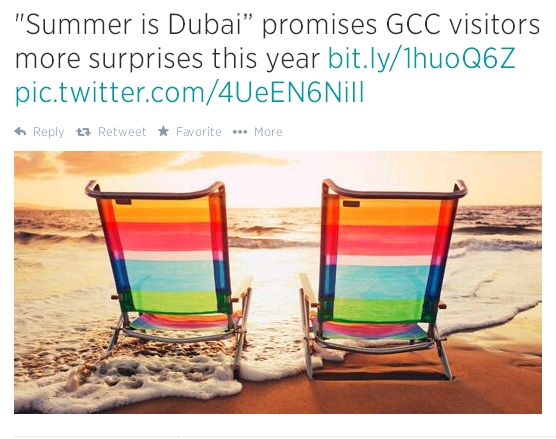Dubai has registered strong growth trends in its visitor numbers for the last five years. Arguably, this trend is attributable to the endeavours of Dubai’s tourism promotion organisation, DTCM. However, many counties across the world have similar companies, but their tourism industries do not enjoy similar growth patterns. This difference sets DTCM apart and makes its marketing approach and target markets subjects of interest. This essay examines the DTCM’s marketing endeavours with a specific focus on its target markets and the prominent features of Dubai as a tourist destination.
Who are the Key Target Markets for Your Tourist Destination?
Tourism is a key driver of global economic growth. Thus, countries strive to capture their share of benefits of this lucrative industry. However, each country’s approach and offerings determine the country that gets the largest share of the benefits. Dubai, one of the emirates that constitute the United Arab Emirates (UAE), has done exceptionally well in the recent past. For example, the city of Dubai, which is the focus of DTCM’s tourism promotion endeavours, was ranked position seven among the world’s most visited cities in 2013 (Jacobs, 2013). Therefore, the source markets of Dubai’s visitors are examined below.
According to the Gulf News Report (2012), Saudi Arabia is Dubai’s leading tourist source market. It has held the same position for a number of years. This attribute makes it one of the most important target markets for DTCM’s marketing campaigns. In fact, apart from China, Saudi Arabia is the only country that hosts more than one of the 20 overseas offices operated by DTCM (Gulf News Report, 2012). Since Saudi Arabia is Dubai’s leading source market, and Iran, Oman, Kuwait, Pakistan, India, as well as Russia feature among its most important source markets, it becomes apparent that DTCM has placed emphasis on regional markets in the past (Gulf News Report, 2012).
In addition, the recent opening of the fourth DTCM office in Chengdu, China, shows that DTCM aims to attract more visitors from China. According to Intelligent Business Horizon (2013), in 2012, China clinched the top position in so far as overseas visitor expenditure is concerned. Dubai as a leading shopping destination, which happened to receive relatively low numbers of visitors from China, has stepped up its campaigns in the country. Consequently, China is the country that hosts more than two of DCTM’s overseas offices (Gulf News Report, 2012). Several other examples can be cited to show that DTCM targets lucrative markets across the world. However, attention now shifts to the market segments targeted by DTCM.
Dubai is known across the world as a paradise for luxury lovers and shoppers (Dubai for Tourism, 2014). As such, the marketing campaigns run by DTCM tend to focus on these issues. For example, Saudi Arabia, which is Dubai’s leading tourist source market, is also home to the largest land and property owners in Dubai (Gulf News Report, 2012). DTCM’s heightened campaign in China also supports this line of argument because Chinese tourists emerged as the leading overseas spenders in 2012 (Intelligent Business Horizon, 2013). Therefore, DTCM is working to attract this expenditure to Dubai.
These examples show that DTCM targets high-class individuals and business people who can double the number of shoppers or property developers and leisure tourists in the city (Evans, 2013). DTCM’s campaigns also target middle-class individuals who can enjoy Dubai’s luxurious tourist offerings and shops (Definitely Dubai, 2014). Little attention is paid to the economy class despite there are hotels that cater for this category as well.
Research and find a Sample Advertisement from the Destination

Describe the Destination Attributes – i.e. Urban, Rural, Coastal, Remote?
The focus of Dubai on the middle and upper class visitors can be seen in its array of tourist attractions. Apart from the traditional attractions, such as the Dubai Museum and the Sheikh Saeed Al Maktoum House, there have been recently developed attractions that clearly target the middle and upper classes (Definitely Dubai, 2014). Dubai boasts of an infrastructure that easily passes as the epitome of architectural ingenuity. Its hotels are among the best ones across the world, it has the tallest building and hotel, and its transport infrastructure is magnificent (Dubai for Tourism, 2014). In fact, most of Dubai’s attractions can be described as outrageous because they do not exist anywhere else. Dubai is an urban setting of its own kind.
Apart from its magnificent architecture, Dubai has excellent coastal attractions, which include a collection of beautiful artificial islands commonly referred to as the Palm Islands (Definitely Dubai, 2014). Its beaches also give tourists memorable experiences.
Intriguingly, Dubai also has a desert that makes it one of the few destinations that offer a combination of breathtaking urban architecture, serene palm filled beaches, and endless desert landscape (Definitely Dubai, 2014). Additionally, outside of the city of Dubai, the majestic Hatta Mountains give Dubai (the Emirate) an element of remoteness (Definitely Dubai, 2014). Since it is one of Dubai’s attractions, it completes the image of the region as a multifaceted tourist destination.
Apparently, Dubai is a destination like no other. However, what stands out about the tourism industry of Dubai is how DTCM markets the destination. It is truly doing a commendable job because, without the aggressive marketing approach it has adopted, Dubai would have remained unknown as it was several decades ago.
References
Definitely Dubai: The Official Tourism Portal of the City of Dubai. (2014). Web.
Dubai for Tourism: Dubai Department of Tourism and Commerce Marketing. (2014). Web.
Evans, P. (2013). Dubai targets Chinese visitors at Chengdu. Routesnews. Web.
Gulf News Report: Dubai’s tourism industry grows 10% to 9.3 million. (2012). Web.
Intelligent Business Horizon: International tourism to continue robust growth in 2013. (2013). Web.
Jacobs, D. L. (2013). The 20 Most Popular Cities In The World To Visit In 2013. Forbes. Web.